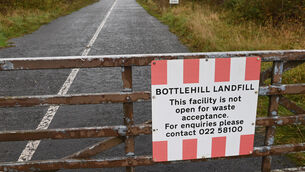Demand for addiction services in the Midwest doubles in just one year

There is a clear need to expand Ana Liffey's team in Limerick, according its CEO Tony Duffin and Midwest region team leader Rachel O'Donoghue. Stock image
Demand for addiction services in the Midwest, particularly Limerick, has almost doubled in the last year while there has also been a “clear” increase in the use of crack cocaine in both the Midwest and Dublin.
That's according to the Ana Liffey Drug Project, which will launch its annual report today.
The addiction service says it has seen a spike in the number of people presenting to its services in the last year, particularly in the Midwest.
“Since 2012, our Midwest team has worked with an average of 250 people per year,” said Tony Duffin, Ana Liffey chief executive. “However, in the last 12 months, our team has worked with over 490 people.
“The demand for our services has never been higher in the Midwest – particularly in the Limerick area,” he said, adding there is a “clear need” to expand its team.

Polydrug use, the use of more than one drug during a session, remains the major concern for the service, according to Rachel O’Donoghue, team leader of Ana Liffey’s Midwest Team.
“However, it is clear that in both the Midwest region and Dublin the use of crack cocaine has increased," she said.
In 2020 Ana Liffey provided 2,550 crack pipes in the Midwest, mainly in Limerick City centre, she added.
“And we have seen a significant increase in Dublin in 2021. We have already seen an increase in the numbers of people presenting to us, and it is unclear what more the aftermath of the pandemic will bring in terms of drug trends and numbers presenting for treatment.”
Launching the 2020 annual report will be Dr Eamon Keenan, the HSE national clinical lead in addiction services.
Dr Keenan said: "Throughout the pandemic, whilst working in strong collaboration with others, Ana Liffey’s face-to-face interventions were delivered whilst observing Covid-19 safety measures.
The annual report launched by Ana Liffey includes a series of in-depth interviews with a small cohort of its service users, that took place in October 2020.
Prior to the pandemic, all interviewees reported being homeless in “very unstable situations".
“By far the most important impact that changes driven by Covid-19 had on the lived experience of the interviewees was housing. The effort to bring people experiencing homelessness into more stable housing situations due to the pandemic in the experience of the interviewees was "both successful and unprecedented," the report notes.
"It also had profound positive effects that went far beyond the mere provision of housing, or the prevention of transmission of disease. Moving people to secure accommodation resulted in self-reported decreases in drug and alcohol use, an ability to focus on other issues like engaging with treatment programmes or opening financial accounts, and an enhanced sense of security."












